Abstract
Cardiovascular responses to graded iv infusions of norepinephrine were observed in 24 dogs that had been treated for 1 week with either placebo, dexamethasone, or deoxycorticosterone. Eight dogs served as control and received daily iv injections of placebo; eight dogs received the mineralocorticoid, deoxycorticosterone; and eight received the glucocorticoid, dexamethasone. The three groups did not differ with respect to base-line hemodynamic variables either before administration of norepinephrine or after autonomic reflexes had been inhibited by ganglionic blockade. Comparisons of the three groups' hemodynamic responses to norepinephrine were made both before and after ganglionic blockade with the parallel line bioassay as a statistical test.
Dogs given deoxycorticosterone had much greater increases in mean arterial pressure and peripheral resistance with norepinephrine than did dogs given dexamethasone or placebo. Dogs given dexamethasone had slightly greater increases in mean arterial pressure than did dogs given placebo; changes in peripheral resistance were similar in the two groups. The augmented response of mean arterial pressure was apparent only after ganglionic blockade in the dexamethasone group. The vascular effects of norepinephrine, therefore, were markedly augmented by treatment with doxycorticosterone and only slightly augmented by treatment with dexamethasone.
The effect of norepinephrine on mean right atrial pressure was augmented in both groups treated with steroid before hexamethonium but only in the group treated with dexamethasone after hexamethonium.
The results indicate that deoxycorticosterone and dexamethasone have different qualitative and quantitative effects on circulatory responses to norepinephrine.
Full text
PDF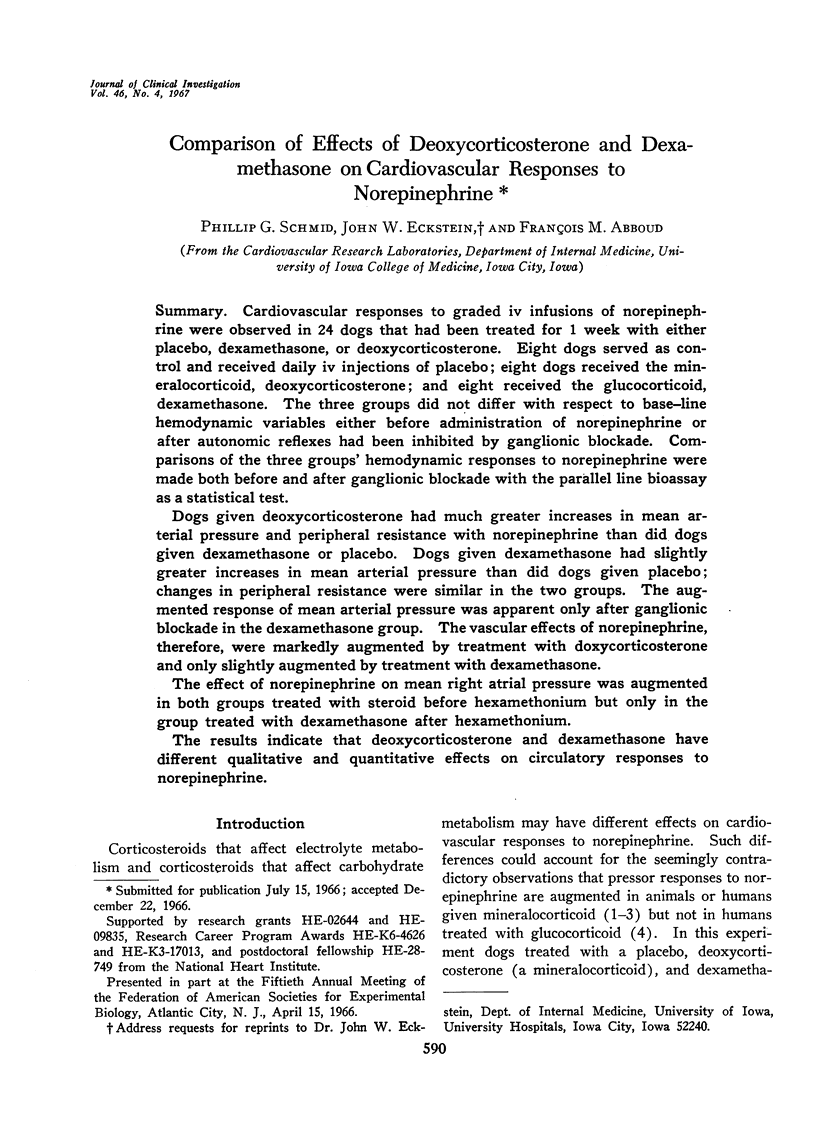
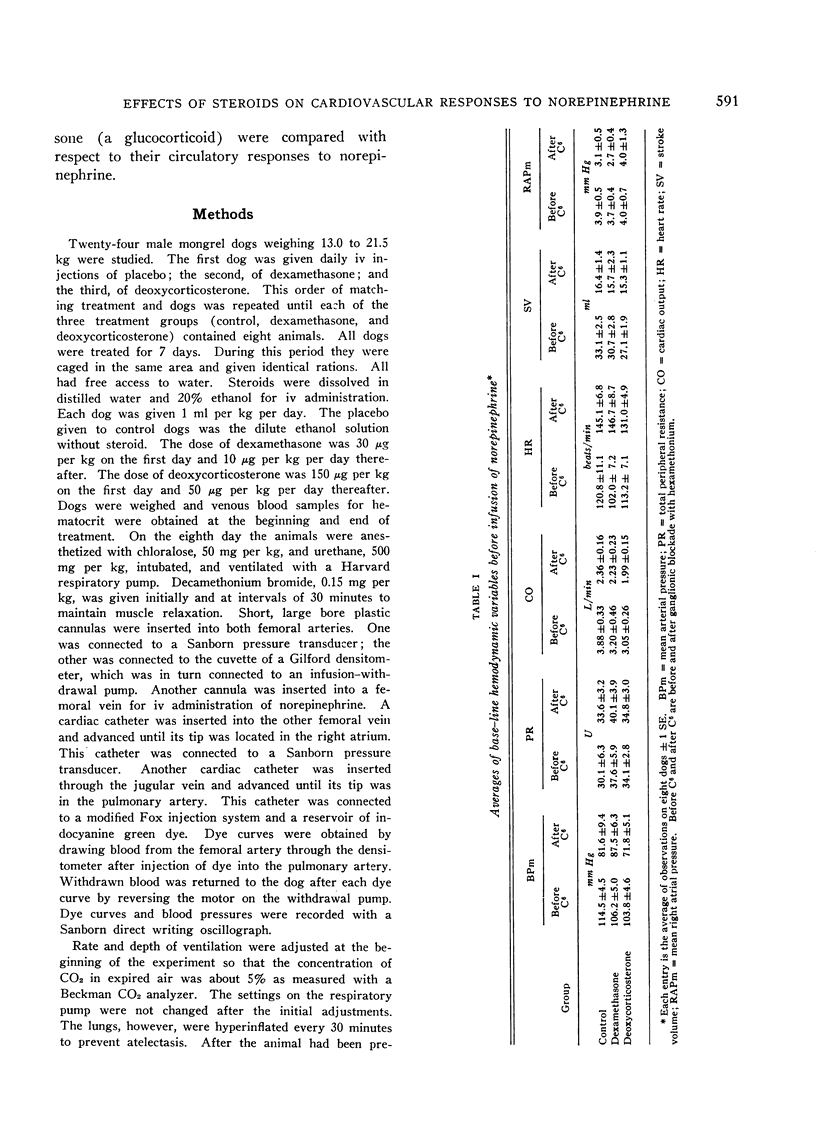
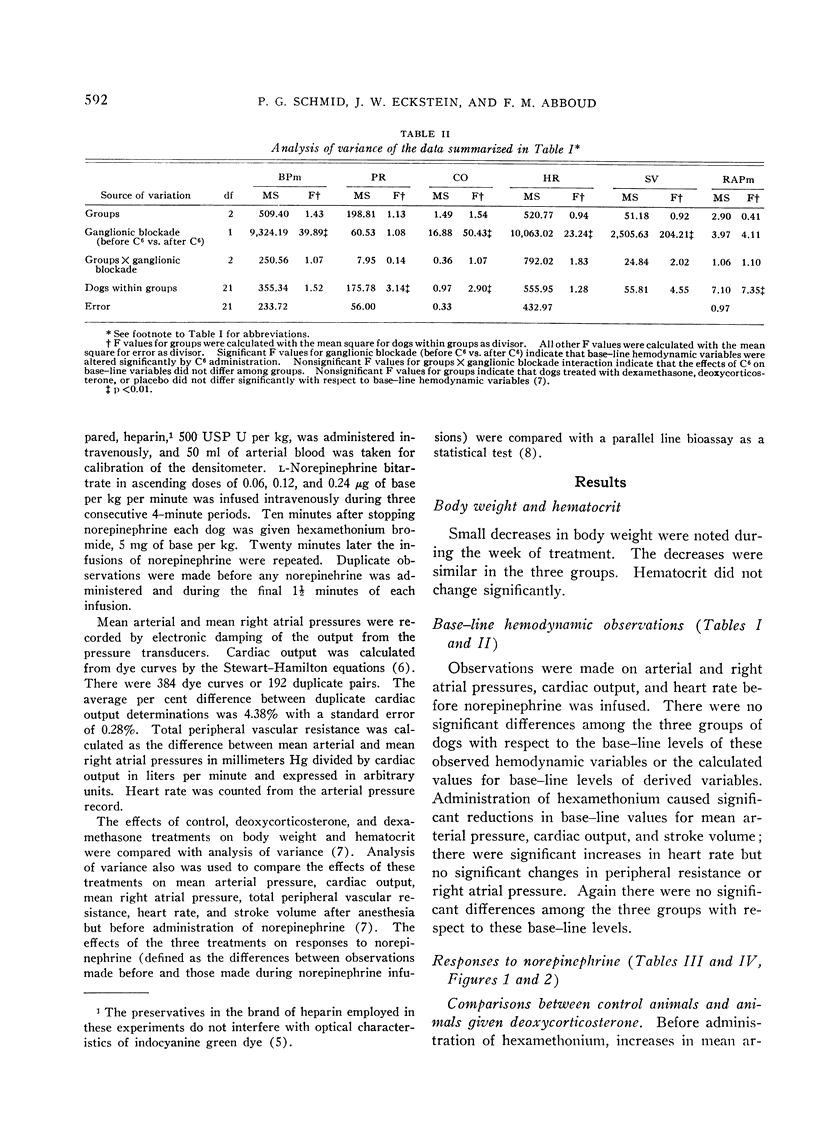
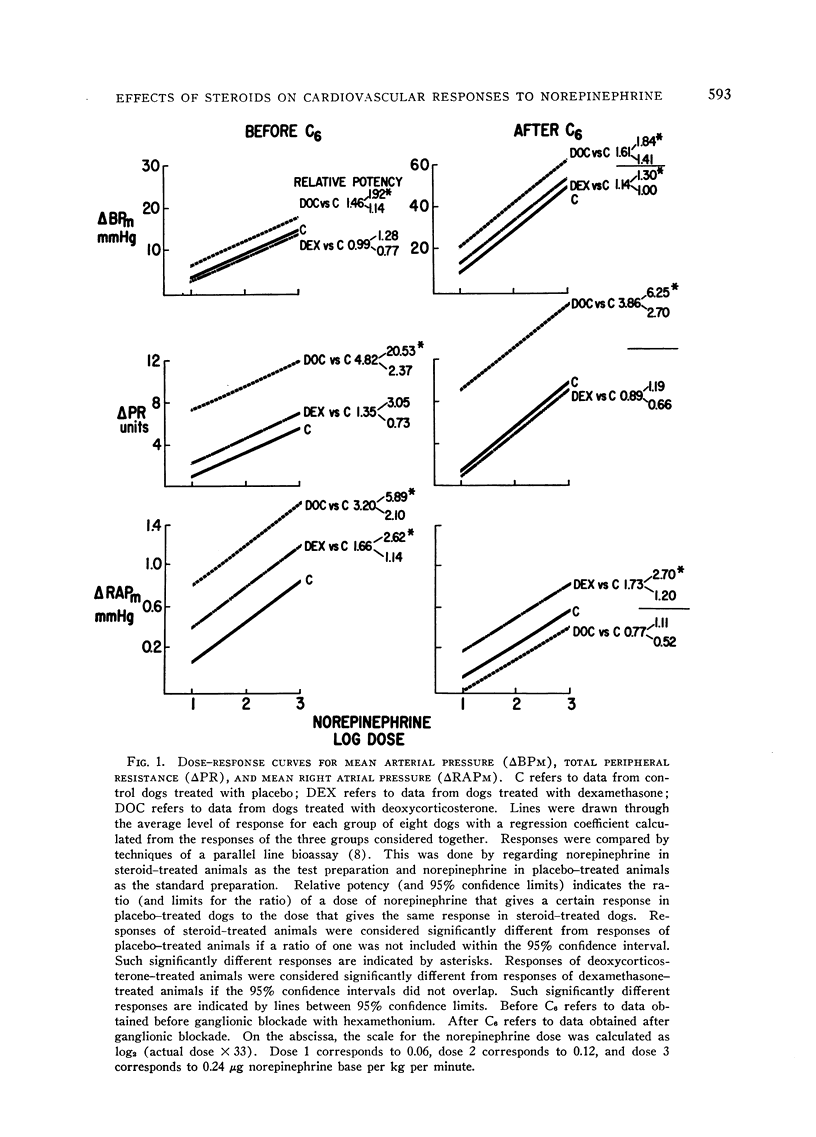
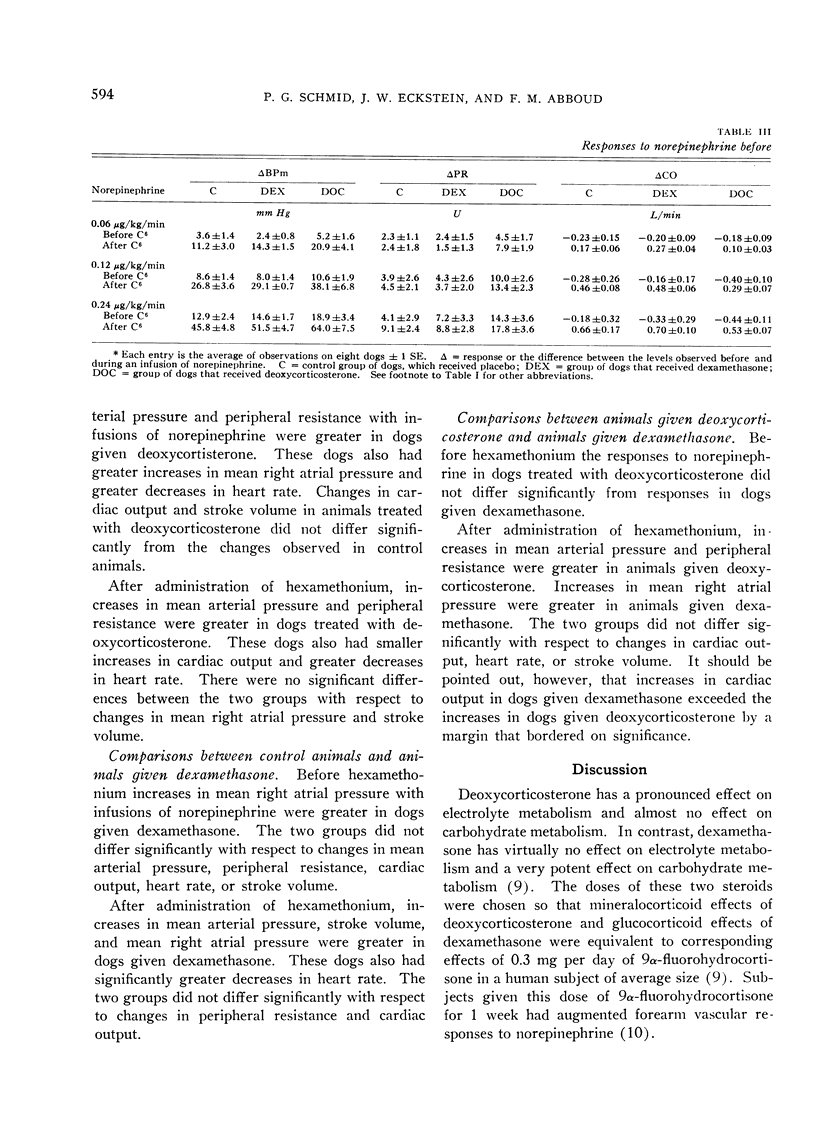
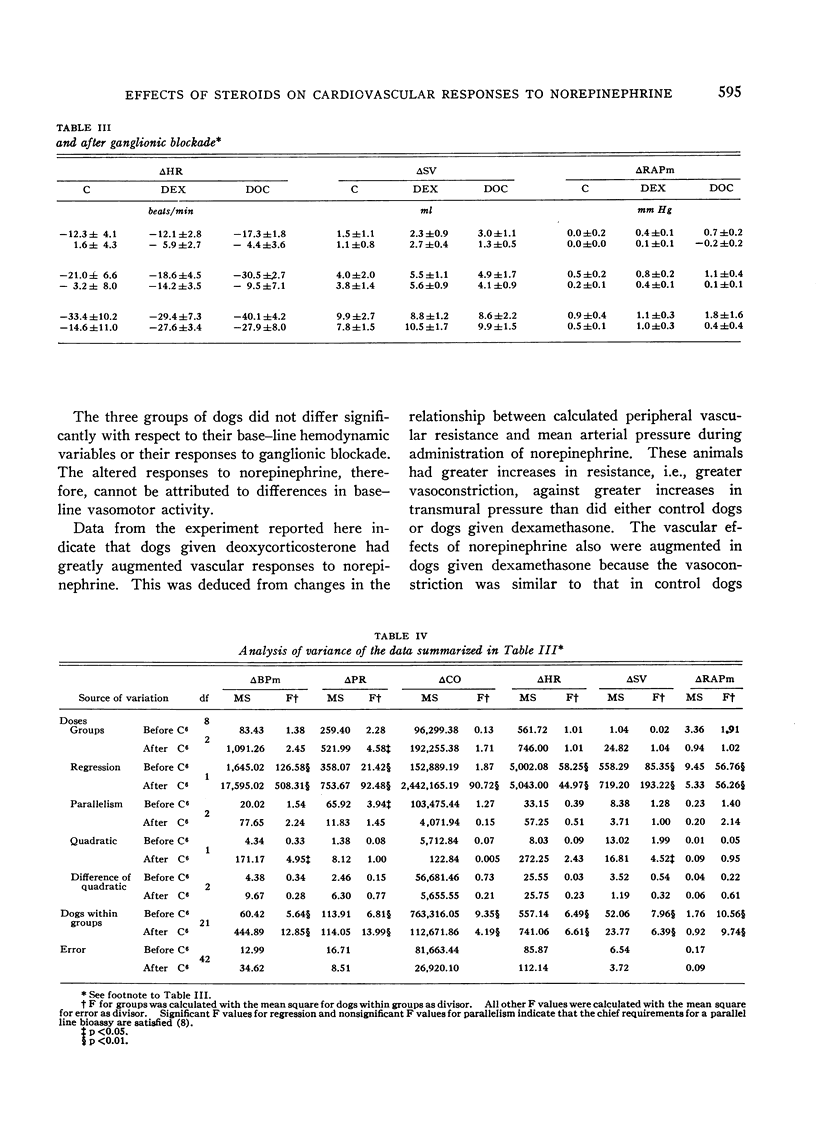
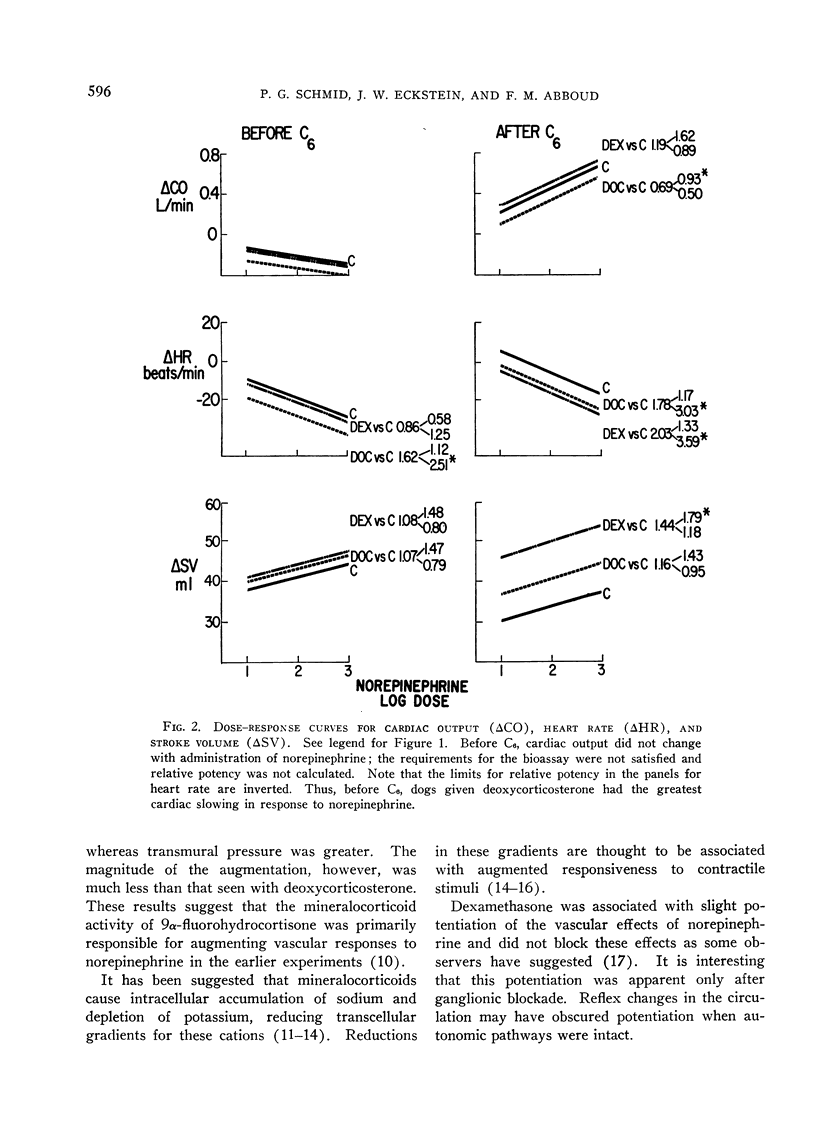
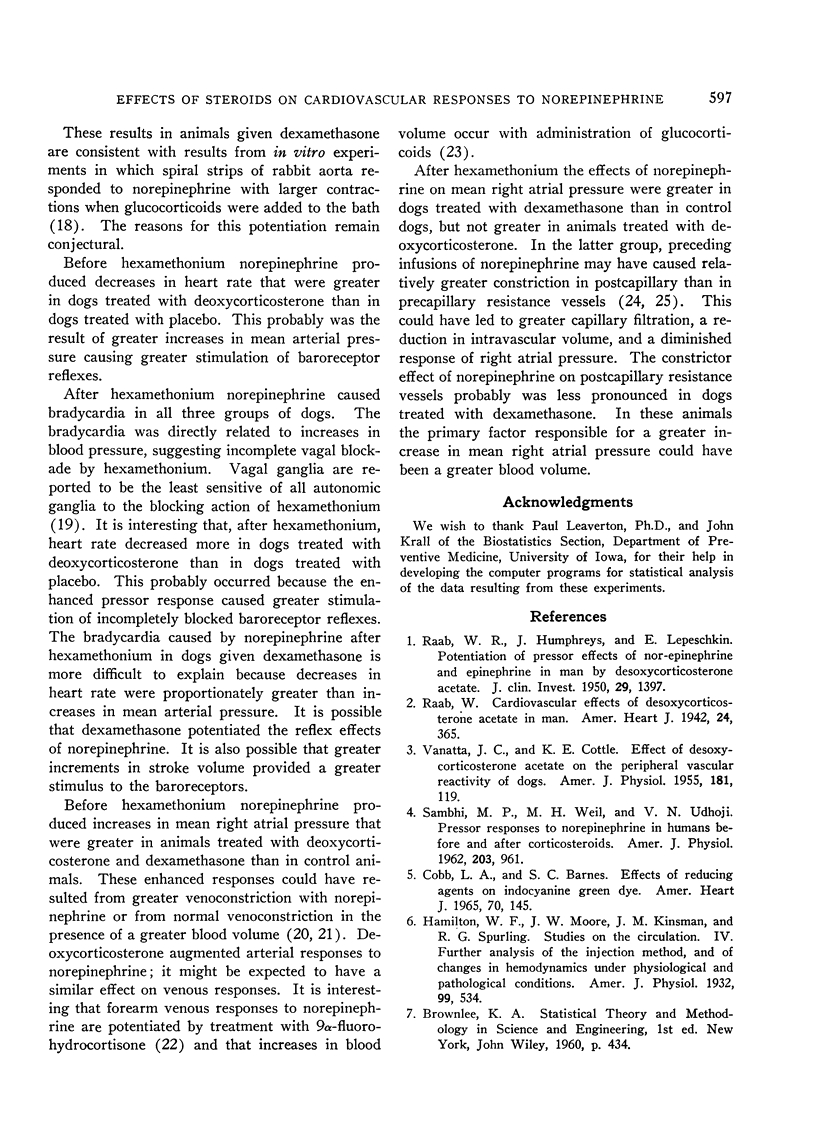
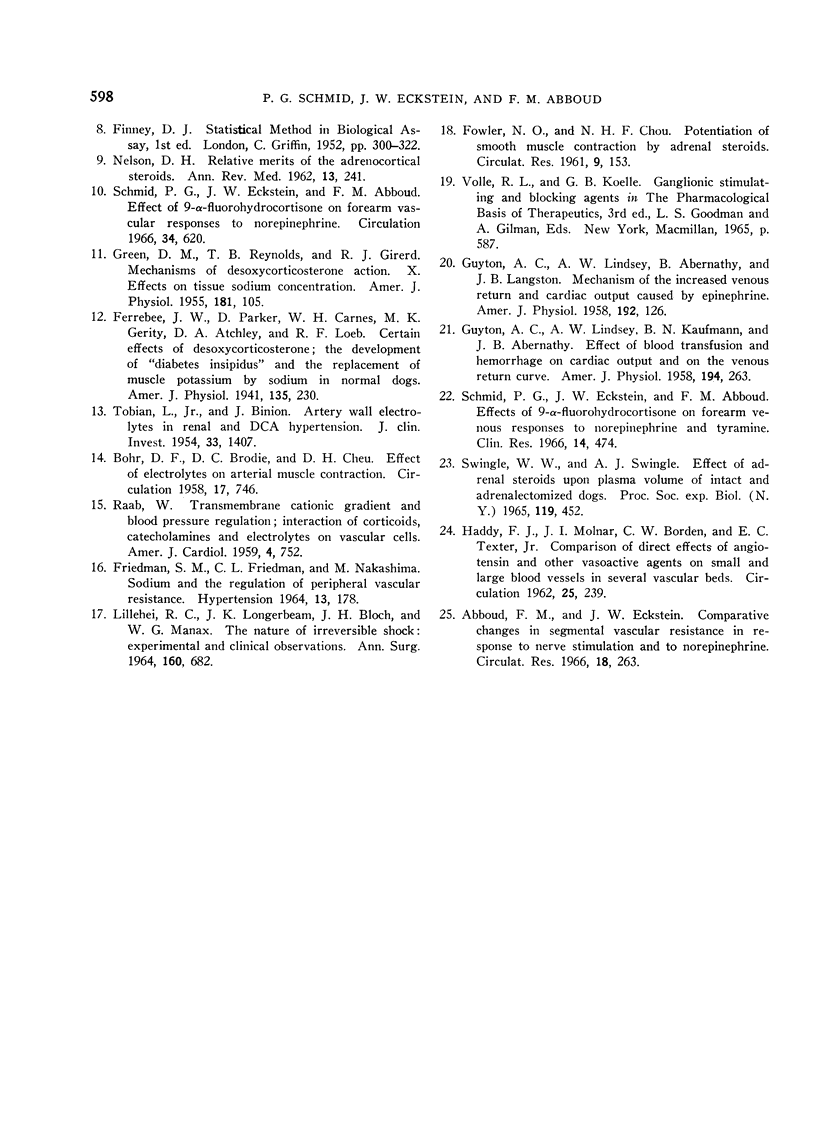
Selected References
These references are in PubMed. This may not be the complete list of references from this article.
- Abboud F. M., Eckstein J. W. Comparative changes in segmental vascular resistance in response to nerve stimulation and to norepinephrine. Circ Res. 1966 Mar;18(3):263–277. doi: 10.1161/01.res.18.3.263. [DOI] [PubMed] [Google Scholar]
- BOHR D. F., BRODIE D. C., CHEU D. H. Effect of electrolytes on arterial muscle contraction. Circulation. 1958 Apr;17(4 Pt 2):746–749. doi: 10.1161/01.cir.17.4.746. [DOI] [PubMed] [Google Scholar]
- COBB L. A., BARNES S. C. EFFECTS OF REDUCING AGENTS ON INDOCYANINE GREEN DYE. Am Heart J. 1965 Jul;70:145–146. doi: 10.1016/0002-8703(65)90143-2. [DOI] [PubMed] [Google Scholar]
- FOWLER N. O., CHOU N. H. Potentiation of smooth muscle contraction by adrenal steroids. Circ Res. 1961 Jan;9:153–156. doi: 10.1161/01.res.9.1.153. [DOI] [PubMed] [Google Scholar]
- GREEN D. M., REYNOLDS T. B., GIRERD R. J. Mechanisms of desoxycorticosterone action. X. Effects on tissue sodium concentration. Am J Physiol. 1955 Apr;181(1):105–113. doi: 10.1152/ajplegacy.1955.181.1.105. [DOI] [PubMed] [Google Scholar]
- GUYTON A. C., LINDSEY A. W., ABERNATHY B., LANGSTON J. B. Mechanism of the increased venous return and cardiac output caused by epinephrine. Am J Physiol. 1958 Jan;192(1):126–130. doi: 10.1152/ajplegacy.1957.192.1.126. [DOI] [PubMed] [Google Scholar]
- GUYTON A. C., LINDSEY A. W., KAUFMANN B. N., ABERNATHY J. B. Effect of blood transfusion and hemorrhage on cardiac output and on the venous return curve. Am J Physiol. 1958 Aug;194(2):263–267. doi: 10.1152/ajplegacy.1958.194.2.263. [DOI] [PubMed] [Google Scholar]
- HADDY F. J., MOLNAR J. I., BORDEN C. W., TEXTER E. C., Jr Comparison of direct effects of angiotensin and other vasoactive agents on small and large blood vessels in several vascular beds. Circulation. 1962 Jan;25:239–246. doi: 10.1161/01.cir.25.1.239. [DOI] [PubMed] [Google Scholar]
- LILLEHEI R. C., LONGERBEAM J. K., BLOCH J. H., MANAX W. G. THE NATURE OF IRREVERSIBLE SHOCK: EXPERIMENTAL AND CLINICAL OBSERVATIONS. Ann Surg. 1964 Oct;160:682–710. doi: 10.1097/00000658-196410000-00012. [DOI] [PMC free article] [PubMed] [Google Scholar]
- NELSON D. H. Relative merits of the adreno-cortical steroids. Annu Rev Med. 1962;13:241–248. doi: 10.1146/annurev.me.13.020162.001325. [DOI] [PubMed] [Google Scholar]
- RAAB W., HUMPHREYS R. J., LEPESCHKIN E. Potentiation of pressor effects of nor-epinephrine and epinephrine in man by desoxycorticosterone acetate. J Clin Invest. 1950 Oct;29(10):1397–1404. doi: 10.1172/JCI102377. [DOI] [PMC free article] [PubMed] [Google Scholar]
- SAMBHI M. P., WEIL M. H., UDHOJI V. N. Pressor responses to norepinephrine in humans before and after corticosteroids. Am J Physiol. 1962 Nov;203:961–963. doi: 10.1152/ajplegacy.1962.203.5.961. [DOI] [PubMed] [Google Scholar]
- SWINGLE W. W., SWINGLE A. J. EFFECT OF ADRENAL STEROIDS UPON PLASMA VOLUME OF INTACT AND ADRENALECTOMIZED DOGS. Proc Soc Exp Biol Med. 1965 Jun;119:452–455. doi: 10.3181/00379727-119-30208. [DOI] [PubMed] [Google Scholar]
- Schmid P. G., Eckstein J. W., Abboud F. M. Effect of 9-alpha-fluorohydrocortisone on forearm vascular responses to norepinephrine. Circulation. 1966 Oct;34(4):620–626. doi: 10.1161/01.cir.34.4.620. [DOI] [PubMed] [Google Scholar]
- TOBIAN L., Jr, BINION J. Artery wall electrolytes in renal and DCA hypertension. J Clin Invest. 1954 Oct;33(10):1407–1414. doi: 10.1172/JCI103018. [DOI] [PMC free article] [PubMed] [Google Scholar]
- VANATTA J. C., COTTLE K. E. Effect of desoxycorticosterone acetate on the peripheral vascular reactivity of dogs. Am J Physiol. 1955 Apr;181(1):119–122. doi: 10.1152/ajplegacy.1955.181.1.119. [DOI] [PubMed] [Google Scholar]


